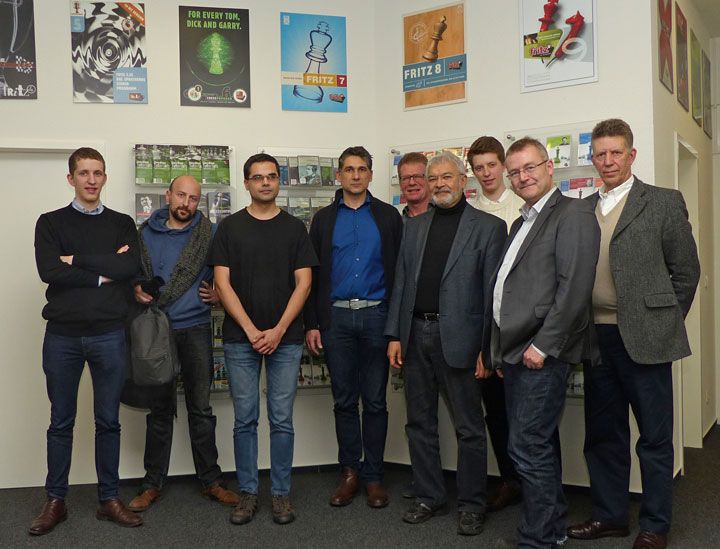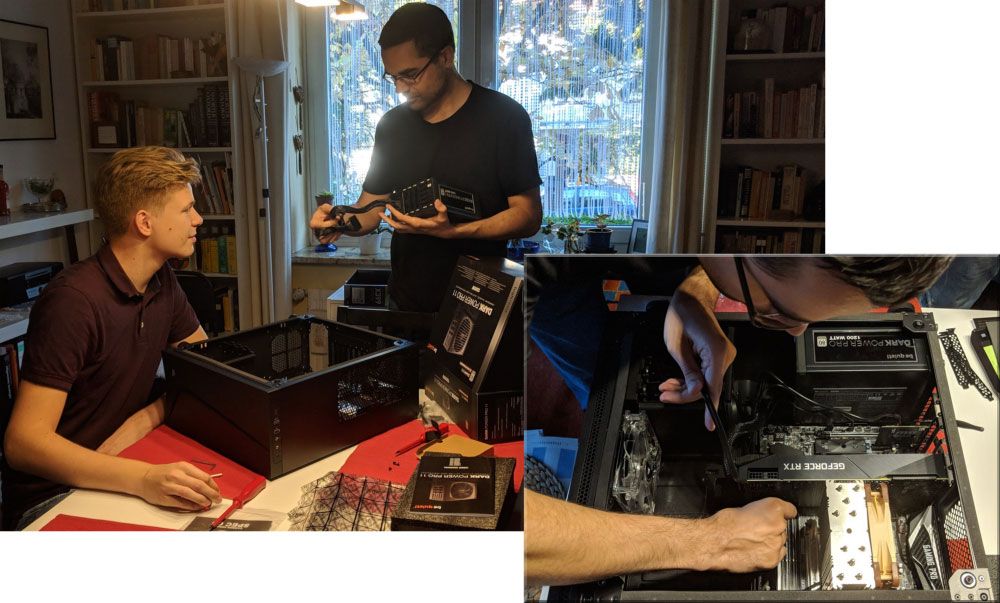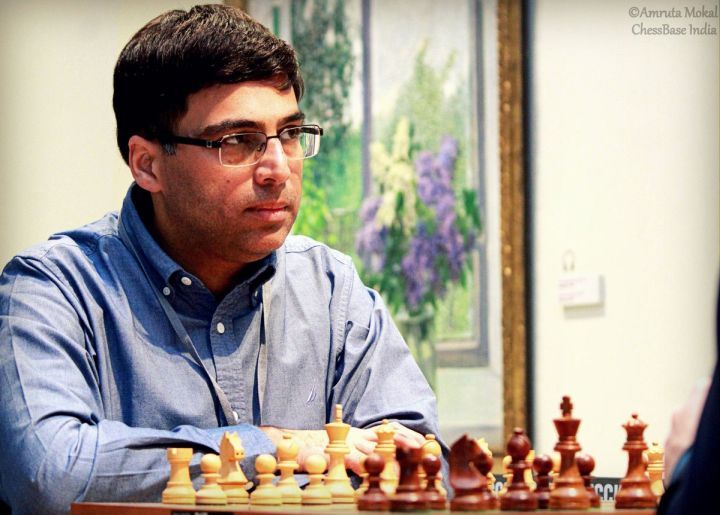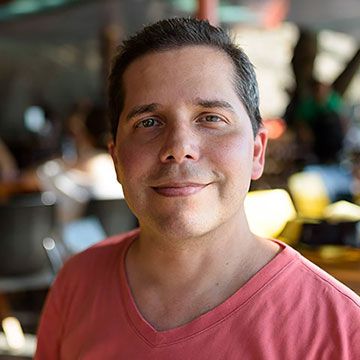Fat Fritz – What on Earth is that?
It's a semi-secret development, an AlphaZero clone, engineered over the past nine months for ChessBase. Fat Fritz was tested by some of the best players in the world, who expressed unmitigated delight over the ideas and improvements it came up with. Now the program is publicly available on the ChessBase Engine Cloud. And it is running on awesome hardware. ALBERT SILVER explains.
Genesis
You probably know AlphaZero. It is a computer program that was developed by DeepMind in late 2017, an artificial intelligence research company founded by Demis Hassabis and subsequently purchased by Google. This AI program used awe inspiring hardware — 5000 custom tensor processing units (TPUs) to self-play tens of millions of games, and 64 second-generation TPUs to train the neural networks. It used no form of external chess knowledge but worked everything out from zero (hence the name). After four hours of work AlphaZero was playing better than the best brute force programs in the world. Here's a ChessBase description of the development: The future is here - AlphaZero learns chess.
Demis has been a friend of ChessBase co-founder Frederic Friedel since the mid 1990s, and his company was quite relaxed about the project and revealing the methods used to generate AlphaZero.

One of the project managers, Thore Gräpel [above in a blue shirt in the middle], research lead at Google DeepMind and Professor of Computer Science at the University College London, came to visit ChessBase in Hamburg, where he held a talk for half a dozen of our talented programmers. They went away inspired, determined to learn more about this kind of computer intelligence, and embark on AI projects themselves.
The Woosh
Back in late September 2018, I had been working on a program called “Deus X”, which was designed to explore and challenge the idea that learning from the best humans and engines, other than itself, would lead to a worse result. Using the open-source project Leela Chess as a foundation, which itself was an attempt to reproduce AlphaZero for the PC, I trained a neural network using millions of top human games from Mega Database and Correspondence Database, as well as engine vs engine games from the Playchess server and the CCRL ratings list. However, I did not reject self-play as a resource. I was only trying to prove that self-play was not the only valid source of content.
I wanted to round this off with self-play in its mature state, but lacked the resources to do so. I then spoke with my old friend Frederic Friedel, who expressed great interest in my ideas and agreed to help me. In early October 2018 he asked his son Tommy and nephew Noah to build him a really powerful computing machine. They bought the components, consisting of a 12-core processor and two state-of-the-art graphics cards that had just been released. These cards have thousands of graphic and tensor core processor units (GPUs and TPU), originally intended to power 3D video display in games as well as ray-tracing lighting effects. But it turns out that the processors are eminently suited for neural network development.

After it was installed, Fred had a very powerful AI machine humming in his home office. Humming? Actually it is a fairly loud whirring sound of multiple fans, dissipating the heat from the 600 watts of energy the computer consumes. That heated the room during the cold Hamburg winter to a very comfortable 23°C, with central heating turned off. The constant sounds of the fans led it to be fondly referred to as “The Woosh”.
So what do we do with the super-machine? Fred offered me the chance to upload tools that were needed to build a neural network for chess, and once that was completed the machine went to work, playing an average 50,000 games per day against itself. I built myself a second, comparable machine which downloaded the games from the Woosh and learned from them – and from other games. Despite this sizable personal investment, and two strong computers, the project still had a thousand-fold hardware disadvantage when compared to AlphaZero, and at least hundred-fold compared to the community-driven effort Leela Chess. Nevertheless the hybrid mix soon came together in ways even our most optimistic thinking could not have predicted. Not only was it playing at superhuman levels of chess strength, but more importantly it did so in a completely new way, not with brute force tactics but with positional ideas that it has come up with, after studying millions of games and billions of positions.
Learning from human and computer games
To check the overall playing strength we entered an early version to compete in a well-respected computer tournament held in Leiden, Netherlands, and run by Jan Krabbenbos. It brought together not just the best PC programs around, but also unique efforts such as Jonny, a project that runs on a university server backed by 2400 CPU cores. As a matter of fact Jonny was using a hybrid neural network itself, as part of its makeup, and had beaten Leela in their individual game at the World Computer Championship. So it was not to be underestimated.
After four rounds, the leader was Jonny with a perfect score, followed by “Deus X” (the Fat Fritz prototype) with 3½ out of 4. We locked horns in round five, and after a tough battle, Deus X came out victorious with black, taking over the lead. After seven rounds, we had won the competition with 6 out of 7. That made it the first neural network to win a computer chess tournament. We showed the games to a couple of GM friends for their opinions, and one game stood out to them as utterly unique and beautiful in the attack the neural network built and conducted. See for yourself:
Very encouraging! But that was not the main objective of the development — to make a program to compete against other chess engines. What we were aiming for was a new analytical tool that chess players could use to reevaluate their openings, and their general strategic ideas in the game. So it became important to have top GMs test the program, tell us what they thought, and whether the program was useful. That was more important than the score against Komodo or Stockfish.
So we gave access to half a dozen really deep players on the Engine Cloud. Some of them hovering around 2800 on the Elo scale, some were weaker tournament players. We wanted to find out whether the latter found the program helpful and useful to their preparation. Their reactions were, without exception, extremely positive — often exuberant. They all wanted permanent access to the program. We will be telling you about their reactions and giving you examples of their analysis in the following weeks. It is very interesting to see how just an hour or two with the program can change the evaluation of openings and positions of 2700+ players analysing with it.
Vishy
A number of top players will probably not allow us to reveal what they had found — the positions and moves they shared with us. "I cannot let you use them in your articles," one of them typically wrote. "They haven't yet been used in practice, and for obvious reasons I want to reserve them for future games, to score points." A number of them did not even want us to tell people that they had been working with the machine.

Five-time World Champion Vishy Anand was an exception, and gratefully so. In a friendly chat, after he had finished a tough game against a top player, the topic of neural networks came up. We gave him private access to a Fat Fritz prototype, running on the same machine now being offered on the ChessBase Engine Cloud. His reaction was unequivocally enthusiastic: "After two days preparing tournaments and games with it (Fat Fritz), I have come to the conclusion I will probably need to revisit my entire repertoire with it. Being able to work with such a powerful setup, thanks to the cloud, from my laptop from anywhere around the world, has been pure joy. It is very interesting to work with Fat Fritz."
Fat Fritz in the Engine Cloud
For a few days now we have silently launched the neural network program Anand is talking about on the ChessBase Engine Cloud. We decided to call it Fat Fritz, a tongue-in-cheek name that is easy to remember and talk about. Here's a summary description of the engine:
- Fat Fritz is an advanced AlphaZero-type artificial intelligence chess engine that has been trained on billions of positions from human and computer-vs-computer games, self-play games, and endgame tablebases.
- Hardware: Fat Fritz runs in the ChessBase Engine Cloud on computers equipped with two of the very latest top-of-the-line graphics cards (GPUs), making it hundreds of times faster than neural network engines running on CPUs.

The program is available for you to try out in the Engine Cloud. Some of you will be familiar with this service, which allows you to use a chess engine on a very powerful remote computer from within the ChessBase program, as if it were running on your local hardware. You will be able to try out Fat Fritz immediately — it costs around 30 Ducats per hour, which translates to ₹247.50/hour.
For those of you who have never used a cloud engine, or who are not completely familiar with how this works, we will be publishing a full tutorial in the next days. It is useful to learn, and very easy — all top players work on the Engine Cloud constantly.
Things to remember
- The original AlphaZero was rooted in the concept of pure reinforcement learning, hence the ‘zero’, meaning it learned everything purely from scratch. A wonderful and fascinating premise, but there is no reason to believe this cannot be enriched with all the material developed until now.
- Our AI project, Fat Fritz, not only uses exclusively created reinforcement learning self-play games, but it has also learned from millions of master level games from Mega Database, millions of top engine games, and even from endgame tablebases. As a result this has given it a more comprehensive and balanced look than a purely ‘zero’ approach would have allowed.
- With millions of self-play games alone, Fat Fritz would only be truly awesome and innovative in its favorite openings, those that were played and trained. Many openings that the engine might not like would only receive cursory attention. By adding the master level games the program gains insights into openings it did not originally like, and reevaluates them. It might still hate some, but at least it will be based on extensive study and exposure to them.
- The hardware used by Fat Fritz on the Cloud is critical. Running a neural network engine on a CPU gives you only a tiny fraction of its true power. When you have two of the fastest GPUs available today, overclocked, you get an unparalleled experience that would cost thousands of Euros to put together.
- Incidentally, when using Fat Fritz you should not be nervous about the small number of nodes per second the program displays. Remember that the evaluation function of a typical brute force program is processing a few thousand positional algorithms, while Fat Fritz is working with 27.9 million values to evaluate each position — a vastly greater knowledge base.
- Finally it is worth mentioning that Fat Fritz is still very much a work in progress, meaning that it will be updated with newer and stronger versions on the ChessBase Engine Cloud.

About the Author

Born in the US, he grew up in Paris, France, where he completed his Baccalaureat, and after college moved to Rio de Janeiro, Brazil. He had a peak rating of 2240 FIDE, and was a key designer of Chess Assistant 6. In 2010 he joined the ChessBase family as an editor and writer at ChessBase News. He is also a passionate photographer with work appearing in numerous publications.











